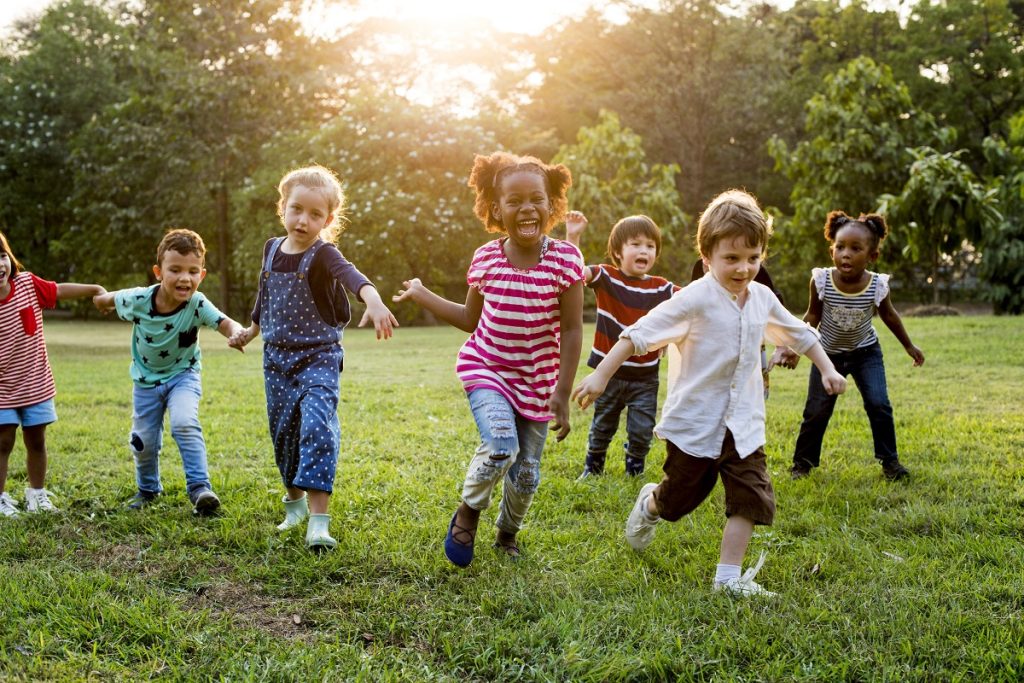- Physical activity is crucial for children’s overall well-being.
- It boosts physical health, enhances mental well-being, and fosters social skills.
- Fun and engaging ways to get your child moving include incorporating play into daily routines, considering indoor activities and exploring the great outdoors.
- Common obstacles to physical activity can be overcome with strategies such as breaking the screen time habit and incorporating physical activity into family time.
As a parent, you understand the value of physical activity. Not only is it essential for maintaining good health, but it’s also a way for your child to have fun, explore, and learn about the world around them.
Yet, in today’s digital age, where screens are ever-present and often more appealing, you might find it challenging to get your little one off the couch and into action. Let’s delve into why physical activity is crucial and how you can make it an irresistible part of their daily routine.
Understanding the Benefits of Physical Activity for Kids
When kids engage in physical activity, their bodies move, and their minds learn. Physical exercise promotes various advantages they can carry throughout their lifetime.
Boosts Physical Health
Remember the boundless energy you once had as a child? When channeled properly, that energy can lead to many health benefits. Encouraging your child to be active can help stave off childhood obesity—a growing concern recently. More than this, regular movement strengthens their muscles and bones, ensuring they grow strong and resilient.
Enhances Mental Well-being
It’s not just about the physical perks. Your child’s mental well-being greatly benefits from regular activity. Physical play and exercise can be pivotal in reducing feelings of anxiety and depression. It’s like giving their mind fresh air, clearing away the clouds. Additionally, you’ll likely notice an improvement in their concentration levels. It’s no wonder kids who are active often perform better academically.
Fosters Social Skills

Remember your childhood—some of your fondest memories might involve playing games with friends. Physical activity can be a social endeavor. Whether it’s team sports, dance classes, or playing in the park, these interactions teach your child essential social skills. They learn about teamwork, cooperation, and the joys of forming genuine friendships.
Fun and Engaging Ways to Get Your Child Moving
Thankfully, there are plenty of ways to make physical activity fun for your child. Depending on your child’s age and interests, you can incorporate various activities into their daily routine. Here are some suggestions to get you started:
Incorporate Play into Daily Routines
Kids often see play and chores as two ends of a spectrum. But what if you could blend them? Turn tidying up into a fun game. Maybe there’s a race to see who can put away toys the fastest, or perhaps you can make up a story where every toy has its “home” to return to.
And don’t forget about study breaks. Play some upbeat music and let your child shake out the jitters with a spontaneous dance session. By incorporating play into daily routines, you’re teaching your child that movement can be part of any moment.
Consider Indoor Activities
If there are days when it’s just not possible to head outdoors, there are still plenty of activities you can do indoors. One exciting option is setting up fun trampoline sessions. Not only does jumping on a trampoline get their hearts pumping, but it also improves balance and coordination. You could even create obstacle courses with pillows, cushions, and furniture for them to navigate.
Explore the Great Outdoors

A big, wide world is out there waiting for your child to discover. And the best part? Nature is one of the best playgrounds. Plan nature hikes or scavenger hunts in your local park. Equip them with a small notebook, and they can jot down or sketch what they find. On warmer days, head to the beach. Building sandcastles, running along the shore, and swimming are all fantastic ways for them to expend energy while having a blast.
Overcoming Common Obstacles to Physical Activity
Parents face different challenges when it comes to getting their child moving. Some of the most common obstacles include lack of time, bad weather, and a child’s disinterest in being active. But there are ways around these hurdles.
- Breaking the screen time habit
- Incorporating physical activity into family time
- Setting a positive example by being physically active yourself
Final Thoughts
Being proactive and intuitive about your child’s physical needs might initially seem daunting, especially with the myriad distractions of modern life. But by understanding and navigating these common hurdles, you pave the way for your child’s healthier, happier, and more active lifestyle. As they grow, they’ll carry these habits and memories with them, forming the foundation of a lifelong appreciation for movement and well-being.
